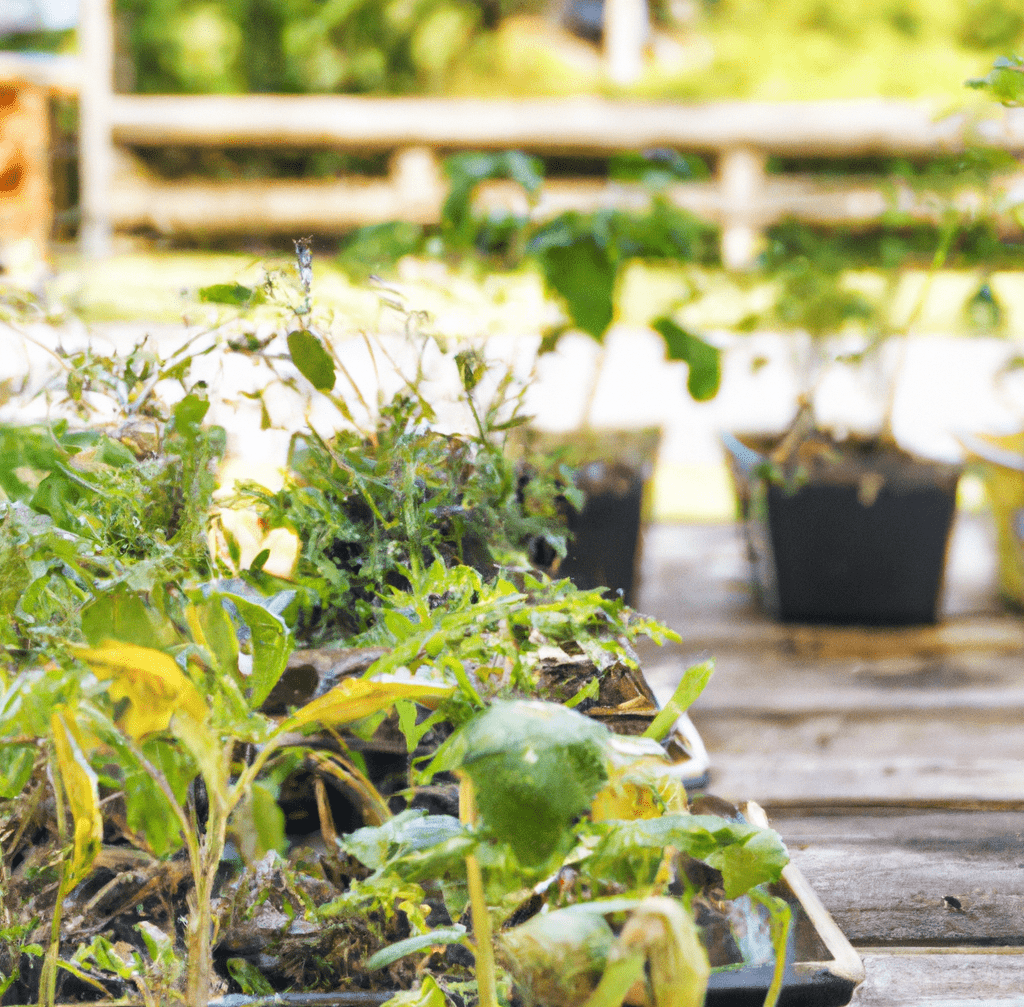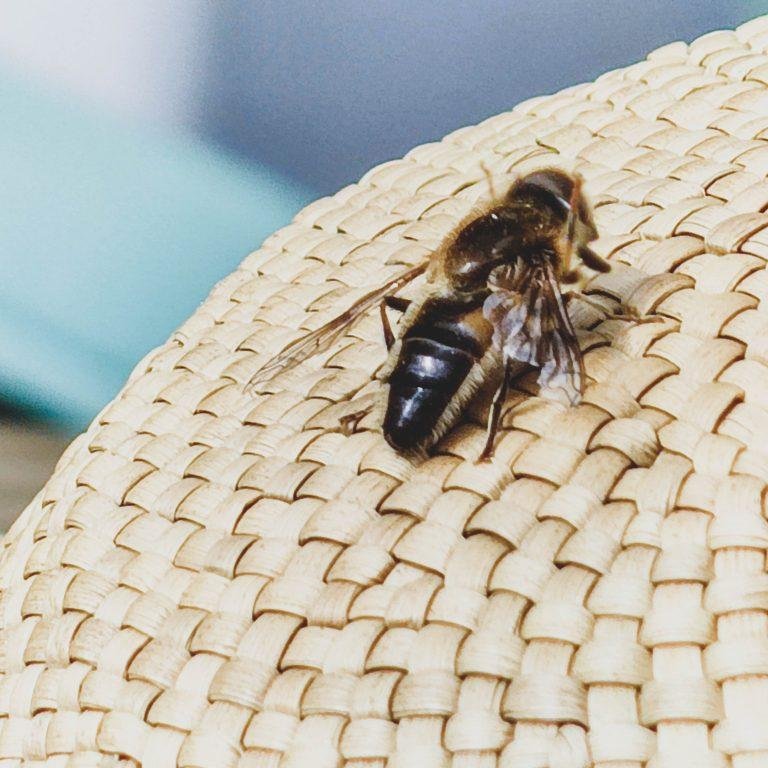Plastic Garden Pots Sizes: Does Size Really Matter?
Just a heads up, this post contains some affiliate links. That means that we earn a small commission if you buy the product at no extra cost to you. That allows us to continue to research and share interesting articles with you. :)
When it comes to plastic garden pots, does size really matter?
That’s a question that many gardeners have. While there are benefits to both large and small pots, it really depends on the type of plant you’re growing.

Gardeners often use plastic garden pots because they are relatively inexpensive and lightweight. However, there are some drawbacks to using plastic pots. Plastic garden pots can leach chemicals into the soil and water, harming plants. They can also retain heat, which can damage roots and lead to plant stress. Additionally, plastic pots can break down over time and release small pieces of plastic into the environment.
With these warnings in place, it’s worth noting that some modern pots are much more durable and don’t leach chemicals into the soil.
Wooden pots are an excellent option for gardeners who want to reduce their carbon footprint. They are biodegradable, so they can be used in a compost heap or returned to the soil after use, but they are not as long-lasting as plastic pots, and usually, the price is prohibitive for new gardeners.
Here’s a look at the pros and cons of each size pot.
What Are The Standard Sizes For Plant Pots?
Plastic plant pots come in all shapes and sizes, but what size should you buy for your plants?
Here are a few things to consider when choosing the right size plastic plant pot:
- The height of the pot: Make sure the pot is tall enough to accommodate your plant’s roots.
- The width of the pot: The pot should be wide enough so that the plant has room to grow.
- The drainage holes: Make sure the pot has drainage holes so water can drain.
- The material: Plastic pots are made from different materials. Choose a durable material that will last long.
When it comes to plastic plant pots, there is no one-size-fits-all answer. Consider your plant’s needs and choose a pot that is the right size.
This table will help you pick the right size pot for the plant you hope to grow. It’s worth bearing in mind that you can easily grow a seedling in a small pot and transplant it later, but if you’re planning only to do container gardening, this list will help you decide what sizes to get.
| Pot Size | Pot Diameter | Pot Height | Best For | ||
| 9cm | 9.0cm | 3.5″ | 8.5cm | 3″ | |
| 1 Litre | 13.0cm | 5″ | 11.0cm | 4″ | |
| 2 Litre | 17.0cm | 6.5″ | 13.0cm | 5″ | |
| 3 Litre | 19.0cm | 7.5″ | 15.0cm | 6″ | |
| 4 Litre | 20.0cm | 8″ | 16.5cm | 6.5″ | |
| 5 Litre | 22.5cm | 9″ | 18.0cm | 7″ | |
| 7 Litre | 25.0cm | 10″ | 20.0cm | 8″ | |
| 10 Litre | 28.0cm | 11″ | 22.5cm | 9″ | |
| 15 Litre | 33.0cm | 13″ | 30.0cm | 12″ | |
| 20 Litre | 35.5cm | 14″ | 32.5cm | 13″ | |
| 25 Litre | 38.5 cm | 15″ | 35.0cm | 14″ | |
| 30 Litre | 41.0cm | 16″ | 36.0cm | 14″ | |
| 40 Litre | 50.0cm | 20″ | 45.0cm | 18″ | |
| 50 Litre | 44 cm | 17″ | 40 cm | 16″ | |
| 70 Litre | 50 cm | 20″ | 46 cm | 18″ | |
| 85 Litre | 55 cm | 22″ | 46 cm | 18″ | |
| 100 Litre | 60 cm | 24″ | 40 cm | 16″ | |
| 110 Litre | 60 cm | 24″ | 49 cm | 19″ | |
| 130 Litre | 65 cm | 26″ | 50 cm | 20″ | |
| 150 Litre | 80 cm | 32″ | 32 cm | 13″ | |
| 170 Litre | 75 cm | 30″ | 50 cm | 20″ | |
| 230 Litre | 80 cm | 32″ | 54 cm | 21″ | |
| 240 Litre | 75 cm | 30″ | 63 cm | 25″ | |
| 290 Litre | 90 cm | 35″ | 56 cm | 22″ | |
| 350 Litre | 90 cm | 35″ | 72 cm | 28″ | |
| 500 Litre | 93 cm | 37″ | 81 cm | 32″ | |
| 500 Litre | 110 cm | 43″ | 65 cm | 26″ | |
| 750 Litre | 113 cm | 45″ | 79 cm | 31″ | |
| 1000 Litre | 130 cm | 51″ | 86 cm | 34″ | |
| 1500 Litre | 147 cm | 58″ | 100 cm | 39″ |
Plastic Garden Pots: General Pros and Cons
When it comes to choosing pots for your plants, there are a lot of options out there. One type of pot that has become increasingly popular in recent years is the plastic garden pot. Plastic garden pots have a lot of advantages, but there are also a few disadvantages to consider before you make your final decision.
One of the most significant advantages of plastic garden pots is that they are very affordable. They are also lightweight and generally easy to move around, which can be a big plus if you have a lot of plants that need to be moved regularly. Plastic pots also tend to be durable, which means they will last longer than other pots.
However, there are a few downsides to plastic garden pots as well. One is that they can get very hot in direct sunlight, which can damage your plants.

The Benefits Of Large Plastic Garden Pots
Large plastic garden pots offer many benefits over their smaller counterparts.
One of the biggest advantages is that they can hold more soil, which means you can grow larger plants. Additionally, the extra space in the pot allows for better drainage, ensuring your plants don’t get waterlogged.
Another advantage of large plastic garden pots is that they’re easier to move around. This is especially helpful if you have a large yard or garden and need to rearrange your plants regularly due to shade problems. Finally, these pots are generally more affordable than other types of pots, making them a great option for budget-conscious gardeners.
The Drawbacks Of Large Plastic Garden Pots
When it comes to large plastic garden pots, there are a few drawbacks that you should be aware of.
For one, they can be quite heavy, making them difficult to move around. A good way to get around this is to either mount the larger pots on wheels or to fill the bottom inch (2.5cm) with large gravel or another lightweight drainage option.
They can also heat up in the sun, which can harm your plants. Some plants will like the heat, but others will not do so well.
Finally, plastic pots can also crack and break easily.
The Benefits Of Small Plastic Garden Pots

Plastic pots are a great option if you’re looking for a small, inexpensive way to add some personality to your garden and give you some growing space.
They come in various colours and styles, so you can get creative. Plus, they’re easy to find and usually very affordable.
Here are just a few of the benefits of using small plastic garden pots:
- They’re Lightweight – Plastic pots are much lighter than their clay or ceramic counterparts, making them easier to move around. This is especially helpful if you have many plants or like to change things up often.
- They Drain Well – Small plastic pots have drainage holes in the bottom, so your plants won’t get waterlogged. This is important for preventing root rot and keeping your plants healthy.
- They’re Inexpensive – As mentioned before, plastic pots are usually very affordable.
The Drawbacks Of Small Plastic Garden Pots
Small plastic garden pots are a popular choice for many gardeners, but they have some drawbacks.
One of the main problems with small plastic garden pots is that they can dry out quickly, damaging your plants.

They can also be challenging to move around. A great way around this is to use old meat trays to stack the small pots in. These trays double up as drip trays to catch any water that might have splashed out of the pots.
It is also a good idea to keep more than one small pot going at a time as this will help to stop disease from spreading too quickly if it does occur.
Another downside to small plastic garden pots is that they can heat up quickly in the sun, harming your plants. Small plastic garden pots may be a good option if you’re looking for a cheap and easy way to get started in gardening, but remember that they have some disadvantages you should be aware of before buying them.
Which Is Better For Your Plants?
When planting your flowers and vegetables, you have a few pot choices. One of those choices is plastic. Plastic has some advantages and disadvantages.
Here are a few tips for using plastic pots:

- Choose a pot that is the right size for your plant. If the pot is too big or too small, it can put stress on the plant.
- Be careful when waterin g your plants. Overwatering can put undue stress on your pt when the soil swells.
- Avoid putting your plants in direct sunlight. The heat from the sun can cause the pot to warp or break.
- Choose a pot that is the appropriate size for your plant. A pot that is too small will put stress on the sides of the pot and may cause it to crack. A pot that is too large will be top-heavy and may tip over, causing it to break.
- Be sure to check the bottom of the pot for drainage holes. If there are none, add some before planting. Excess water can cause the pot to crack or break (especially in cold weather) and contribute to root rot in some plants.
- Place your pots on trays or saucers to catch any water that may leak out. This will help prevent water damage to your floors or furniture.
Back To The Good Life is a participant in the Amazon Services LLC Associates Program, an affiliate advertising program designed to provide a means for sites to earn advertising fees by advertising and linking to Amazon.com. We also participate in other affiliate programs which compensate us for referring traffic.







